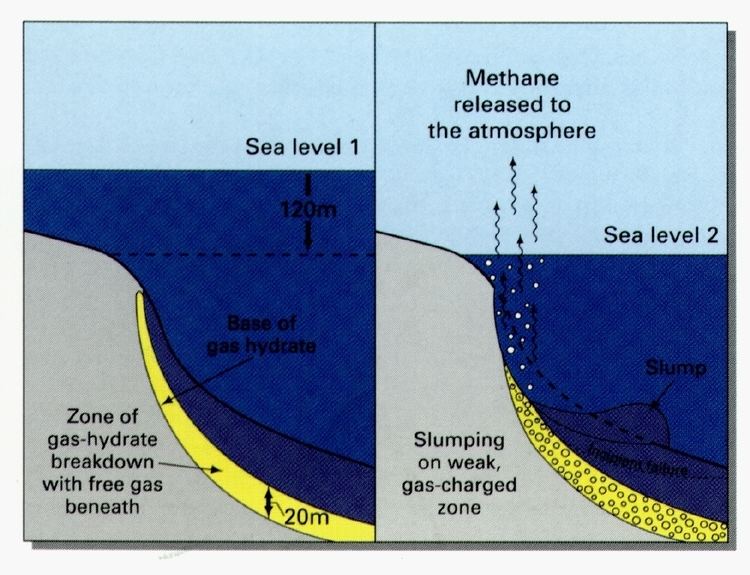 | ||
A methane chimney or gas chimney is a rising column of natural gas, mainly methane within a water or sediment column. The contrast in physical properties between the gas phase and the surrounding water makes such chimneys visible in oceanographic and geophysical data. In some cases, gas bubbles released at the seafloor may dissolve before they reach the ocean surface, but the increased hydrocarbon concentration may still be measured by chemical oceanographic techniques.
Contents
Identification
In some locations along Russia’s northern coast, methane rising from the sea floor to the surface has caused the sea to foam. However, most methane chimneys do not produce such visible signs at the sea surface. Instead, plumes are identified by a combination of chemical and physical oceanographic and geologic data. Plumes of methane bubbles, whether in the water column or subseafloor sediments, have lower density and sound speed than the surrounding water. As such, these plumes can be imaged by a variety of acoustic techniques, including seismic reflection data and conventional fishfinders. Dissolved methane is usually identified through widespread chemical analysis of water samples, including gas chromatography of gasses extracted from the headspace of seawater samples taken at depth (headspace is the space above a sample in a sealed container, which forms as higher temperature and lower pressure allows gasses to come out of solution). Continuous measurements of methane concentration in seawater can be made by underway ships using cavity ring-down spectroscopy.
Association with climate change
Large deposits of frozen methane, when thawing, release gas into the environment. In cases of sub-sea permafrost, the methane gas may be dissolved in the seawater before reaching the surface. However, in a number of sites around the world, these methane chimneys release the gas directly into the atmosphere, contributing to global warming.
Petroleum provinces
In hydrocarbon exploration, gas chimneys revealed on seismic reflection data are indicators of active gas migration and a working petroleum system.
Trees as methane chimneys
Trees in swampy, low-laying areas can conduct methane produced in soils up through their stems and out their leaves. Other plants in bogs and marshes also act in this way. This accounts for approximately 60 teragrams, or about 10% of global annual production.
